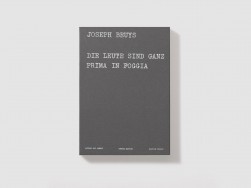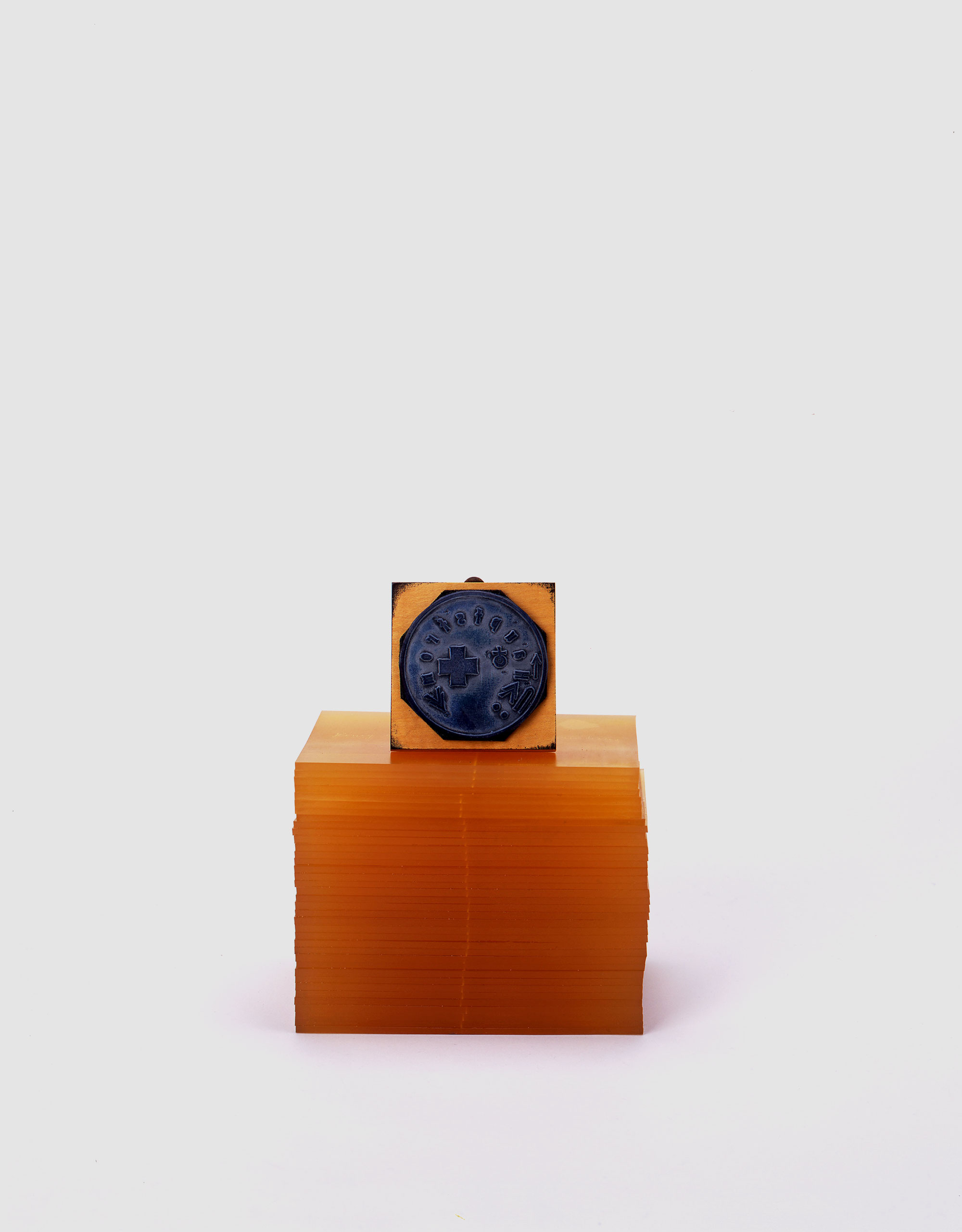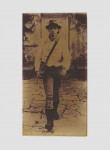Main Stream
[Hauptstrom]
- 1973
- Invitation card, stamped
17.3 x 24.5 cm - Edition: 50 plus 3 a.p., signed and numbered
- Publisher: Edition Staeck, Heidelberg
- Catalogue Raisonné No.: 70A
The photograph in this multiple depicts Beuys in the midst of a Fluxus performance by Wolf Vostell entitled Bus Stop, from 1964.1 To create the multiple, Beuys stamped the card on which the photograph is printed with the contact information of the Organisation for Direct Democracy Through Free Collective Referendum, which he had recently co-founded, together with a circular motif that he referred to as his ‘Main Stream’ [Hauptstrom] insignia. By adding these two stamps to the photograph, he was suggesting a connection between his Fluxus activities of the 1960s and the outwardly distinct, yet thematically related, social projects, to which he had devoted his attentions in more recent years.
In the early 1960s, Beuys was drawn to the Fluxus movement for several reasons. Sympathetic to the anti-elitist aims of its founder George Maciunas, he welcomed the attempts of Maciunas and other figures, like John Cage and Nam June Paik, to expand the art world’s horizons by ignoring the boundaries of traditional art media. He was also drawn to the movement’s efforts to undercut the art market, whether by working with ephemeral performances, or creating inexpensive multiples.2 By the late 1960s, however, he had begun to find these tactics confining. While still convinced of their potential to democratise the art world, he grew eager to advance this impulse throughout society at large. It was for this reason that he co-founded the German Student Party in 1968 and its successor groups, the Organisation of Non-Voters, Free Collective Referendum, and the Organisation for Direct Democracy Through Free Collective Referendum, in the early 1970s.
Regarding these activities as an expansion of his work with Fluxus, Beuys developed his Main Stream insignia as a means of affirming his continued allegiance to the movement.3 In addition to the word ‘Hauptstrom’ [Main Stream], the stamp features numerous small symbols, including a double chevron, an arrow, a magnet sign, an earth sign and a cross. While the precise significance of these motifs is complex, all are connected to the flow or flux of energy, hence with also with the word ‘Fluxus,’ which designates these processes in Latin.
The circumstances surrounding Beuys’s spontaneous participation in this event are recounted in Jürgen Becker and Wolf Vostell (ed.), Happenings. Fluxus, Pop Art, Nouveau Réalisme (Reinbek bei Hamburg: Rowohlt, 1965), not paginated. ↩
For a useful overview discussion of Beuys’s affiliation with Fluxus, which encompasses these points, see Götz Adriani, Winfried Konnertz and Karin Thomas, Joseph Beuys: Life and Works (New York: Barron’s, 1979), 77–95. ↩
In this connection, see Götz Adriani, Winfried Konnertz and Karin Thomas, Ibid., 163. ↩
© Mario Gastinger, Photographics, Munich




